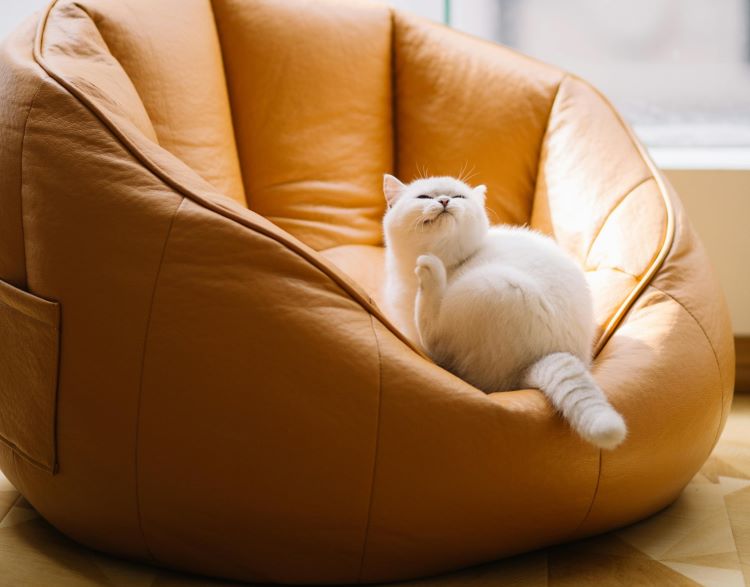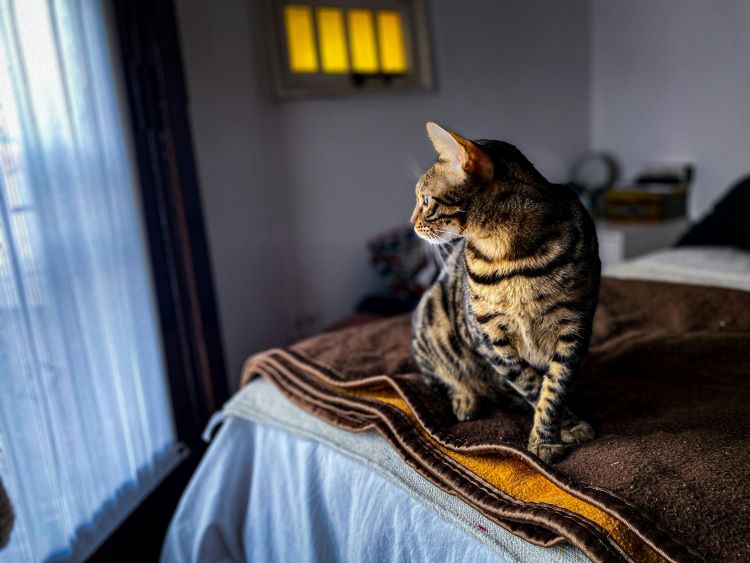Ready to help treat your pet to a healthy life?
Is Pet Insurance Worth it for an Indoor Cat?
By : Brianna Gunter | Published Jan 23, 2025

You’ve probably heard of pet health insurance and how it can help with veterinary costs for surprise illnesses and injuries. There’s no doubt that dogs and cats alike are exposed to various germs and potential dangers whenever outside of the home, which makes pet insurance a valuable choice. But what about those who spend their lives indoors?
Cats in particular are more likely to be inside-only pets. In fact, 63% of domestic cats in the United States are kept entirely indoors, and this number may be on the rise. Even many cat parents who do let their felines experience outdoor adventures only do so occasionally and under strict supervision. So, is pet insurance really needed for indoor cats?
The short answer: it’s worth considering. While pet insurance or “cat health insurance” is not technically a requirement of pet parenting, it is still recommended by veterinary professionals for all kinds of cats. Regardless of how your kitty spends their days around the house, here’s what you need to know.
5 reasons cat owners get pet health insurance
There are a lot of different reasons people choose to protect their cats’ health with insurance. You may find you have one clear motive for doing so, or, like many pet owners, it could end up being a number of different factors. But if you need some help figuring out why pet insurance for indoor cats is important, here are five of the top reasons people choose it.

1. Indoor cats can still get sick
From germs to cars to predatory wildlife, it’s clear there are a lot of dangers for cats in the great outdoors. But the truth is that indoor kitties can still get sick and hurt too. They may contract illnesses from exposure to the pathogens carried in on shoes, clothing, or other pets. They can also still suffer from parasitic infections and gastrointestinal issues if their food happens to be contaminated or expired. Stress, lack of stimulation, or obesity can also weaken an indoor cat’s immune system and make them more vulnerable to illnesses.
2. Accidents aren’t limited to outdoors
Sure, they may not be falling out of a tree or find themselves in the path of a car like an outdoor feline, but your indoor cat could still hurt themselves accidentally around the house. They can ingest toxic plants, human medications, or cleaning chemicals. Sharp objects, hot stoves, or unsecured heavy items can cause injuries. Curious cats might become trapped in small spaces, tangled in cords, or injured by closing doors. Falls from high surfaces or unsecured windows pose serious dangers. Even common household items, like plastic bags or string, can lead to choking or gastrointestinal blockages.
Cat-proofing your home is essential to help mitigate accident risks. But as all too many new pet parents come to find, cats are as clever and unpredictable as they are curious. Accidents happen even with safeguards in place, so cat health insurance can serve as an extra layer of protection.
3. Feline genetics influence health
It’s not just risks around the home. Just as with humans, your cat’s genetic makeup and age has a great deal of influence on their health. Genetic predispositions or age-related conditions like diabetes and arthritis may arise. And while you may not have your cat’s full family health history at hand, it’s worth getting to know their health risks by breed. All breeds are predisposed to certain health conditions over others. So, it’s important to learn more about their breed and what kinds of illnesses they may be susceptible to.
Not all types of pet insurance include hereditary conditions in their coverage, mind you. Fortunately, Trupanion covers these conditions as long as they are not considered pre-existing.
4. Chronic conditions can affect any cat
Chronic conditions in cats are long-term health issues that require ongoing management. For example, illnesses like diabetes and feline asthma require long-term care. Early detection through regular vet visits and proper care can improve quality of life significantly. Naturally, however, these conditions can still be very costly regardless of when they’re caught. Fortunately, a good cat insurance plan (like one with Trupanion) will be able to help with these costs as long as the chronic condition is not pre-existing.
5. Cat insurance provides peace of mind
Regular vet checkups and a clean, enriched environment are essential for keeping your cat healthy, and, as we’ve stated, most veterinarians recommend cats be kept indoors for safety reasons. However, the truth that all cat owners need to know is that there are no guarantees. Surprises can still happen at any time, whether your pet spends most of their time indoors or outdoors.
That’s why many cat parents opt for the peace of mind that comes with cat insurance. After all, the benefits of a good cat insurance policy are twofold: protecting your pet’s health and helping prevent sticker shock over surprise veterinary costs.
Treatment costs for feline health conditions
Unexpected health conditions may not be something you can budget for in your cat’s care. To give you a better idea of how impactful these surprises can be, here are some veterinary cost examples based on real pets:
- Vomiting — $400 - $18,161
- Diabetes mellitus — $197 - $21,724
- Diarrhea — $213 - $12,160
- Gastroenteritis — $301 - $13,957
- Urinary tract infection (UTI) — $199 - $8,242
- Mass/lesion — $586 - $17,691
- Heart murmur — $333 - $8,401
Amounts shown in USD. Treatment costs based on Trupanion claims data for cats, showing the ranges of average eligible costs claimed to the highest eligible costs claimed as of January 2025.

Common health risks for indoor cats
We’ve covered some of this above, but everyone with an indoor cat should be aware of the specific risks they can face. While indoor-only cats may be safer overall than their outdoor counterparts, there are still a number of risks to their health to consider.
Here are 10 health conditions that indoor cats may experience:
- Obesity — Lack of exercise and overeating can lead to weight gain and increase the risk of other harmful health conditions (like diabetes).
- Urinary tract issues — Includes urinary tract infections and bladder stones.
- Dental disease — Tartar buildup can cause gum disease and tooth loss.
- Kidney disease — A common issue, especially in older cats who may not live healthy lifestyles.
- Respiratory infections — Can spread through air or contaminated surfaces.
- Hairballs — Result from excessive grooming and can cause blockages.
- Arthritis — More common in senior indoor cats, leading to reduced mobility.
- Parasites — Fleas, worms, and mites can still affect inside cats as they can find their way indoors.
- Heart disease — Includes hypertrophic cardiomyopathy, a genetic condition.
- Toxicity — From medications to houseplants, there are a number of things in the home that can cause harm to cats if ingested.
- Other accidents in the home — May involve furniture-related injuries, electric cords, etc.
Pet insurance for cats is growing in popularity
While having pet insurance isn’t a required part of cat parenting, veterinarians have increasingly recommended it over the years as a responsible decision. When a cat — indoor or outdoor — requires unexpected veterinary care, having a good pet insurance policy in place can make all the difference.
Cat owners themselves are realizing this as well. Cat insurance is swiftly growing, even faster than dog insurance. While more dogs remain insured than cats, views are shifting about feline health and the kinds of risks cats face throughout their lives. According to a recent market analysis, cats now make up almost 20% of all insured pets (as of 2024), and cat enrollments grew by more than 26% between 2022 and 2023 alone.
Not ready to get a quote just yet? Learn more about the benefits of pet insurance for your cat.
